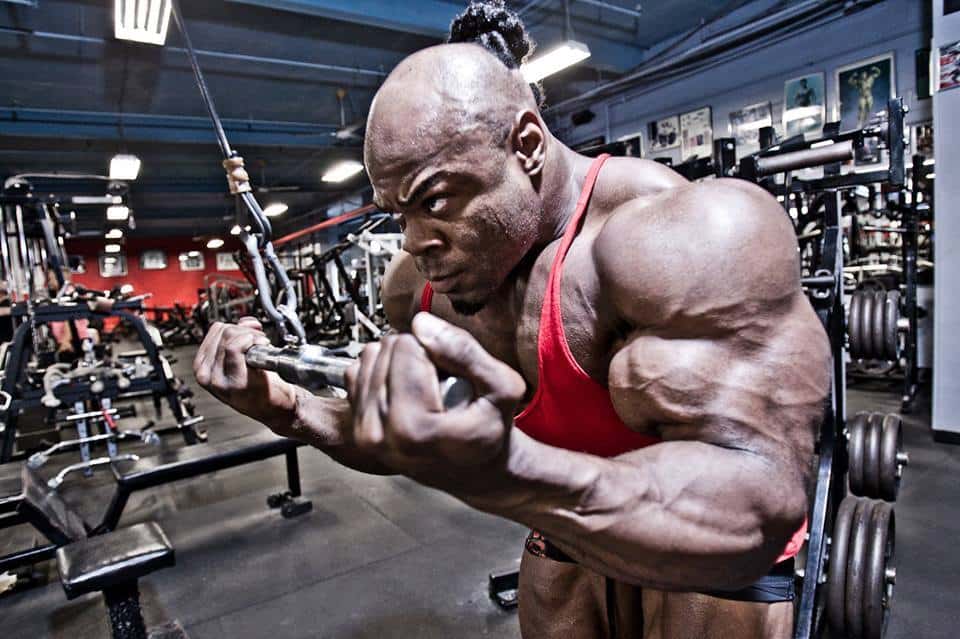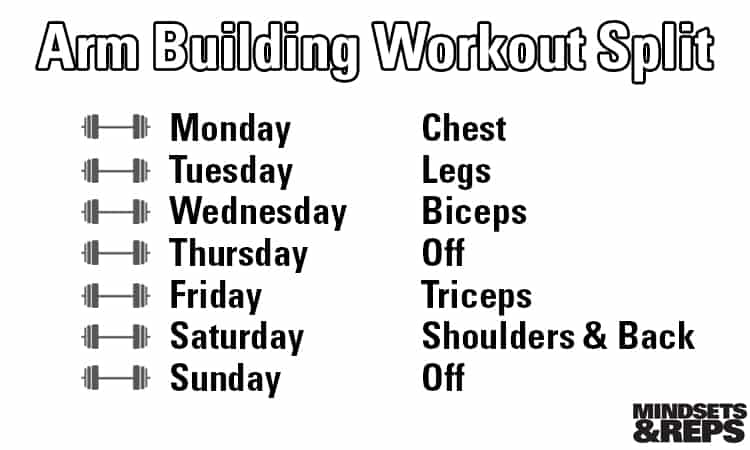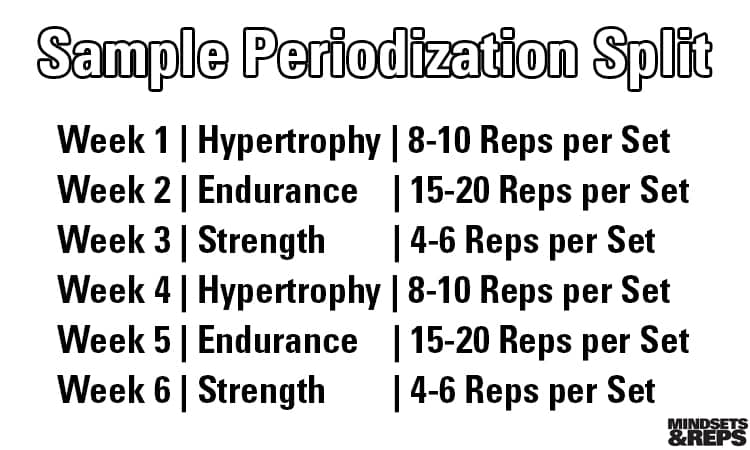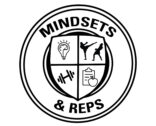
It’s highly doubtful that I’d ever be mistaken for Kai Greene (above), but if there is one aspect of my physique that stands out to others it’s my arms. For whatever reason, bicep and tricep growth is a thing that comes naturally for me.
Anyone who has lifted long enough can identify body parts that they feel good about and ones they’d like to improve. While genetics do play a role, you should never feel like you can’t make noticeable gains to any muscle. There are numerous actionable steps you can take today to build bigger arms.
1. Give it its own day
I don’t mean arm day. I mean a biceps day and a triceps day. Right or wrong, this is what I did when I first started training. Basically split training to a whole new level. Years later I discovered why this practice was so successful.
When it comes to working out, the biggest factor that will lead to muscle growth is volume. Training volume can be calculated by multiplying reps x sets x weight lifted or simply by counting total working sets (any set that isn’t a warmup) during the workout.
By having separate biceps and triceps workouts, you’ll be able to do a considerable amount of volume. Conceivably you could double your volume immediately. In any event you’ll see a significant increase by splitting up these workouts.
A training split with individual biceps and triceps workouts would look like this:

It’s still a 5 day split, which most intermediate and advanced trainees would perform. Instead of combining biceps and triceps into an arm workout, you would combine say back and shoulders. Conceivably you could combine any two body parts, like chest and shoulders, but back and shoulders is more typical (since most people wouldn’t want to detract from their chest workout).
2. Use Periodization
Periodization is a strategy of organizing your workouts in a manner that ensures constant progress. Typically people do the same routine over and over which leads to stagnation. The body needs new stimulation to build muscle. This seems obvious, but how many people do you know continue to do 3 sets of 10 reps of the same exercises with the same weight?
There are many forms of periodization, ranging from changing workouts on a daily, weekly, or monthly basis. On the surface it’s important to note that any periodization is better than no periodization, so whichever method you choose is better than just winging it.
If you’re following the training split laid out in tip #1, then daily and weekly periodization are one in the same. Daily periodization means you change things on a workout by workout basis. Since you are only working out one body part per week then there is no difference between daily and weekly.
When people first learn about periodization they probably envision changing exercises from workout to workout, but that isn’t necessarily the case. Periodization is more about changing the reps. You could conceivably do the same exercises each time and still make great progress on a properly structured program.
The simplest way to do so is to alternate between strength, hypertrophy, and endurance rep ranges. An example is outlined below.

It’s important to note that periodization will not work unless you choose the appropriate weight for each set. Too often I see people implement a structured program that involves days with high rep training only to get super conservative and not use optimal weight. They fear that they won’t be able to get 20 reps if they go too heavy. Firstly, this is why we use rep ranges (like 15-20 reps). Secondly, the whole point of any workout is to push yourself. If you get a little too lofty with the weight and can only crank out 13 reps, that’s certainly not a bad thing.
3. Intra Workout Nutrition
The most important part of your day is your time in the gym. As we alluded to earlier, too many people go through the motions with their training. You’ll never make progress without pushing yourself hard. And in order to get the most out of your workouts you have to fuel properly.
I’m a huge advocate of intra workout nutrition. Workouts are sacred; they’re where muscle growth initially stems from. If you’re looking for maximal biceps and triceps growth, why wouldn’t you try to optimize every single facet of the workout?
Intra workout nutrition is more about principles than specific foods. The purpose of intraworkout nutrition is to provide energy for the workout, keep the body in an anabolic (muscle growth) state, and immediately jumpstart recovery. The two nutrients that will accomplish this are carbohydrates and protein.
Since it isn’t practical to eat during a workout for a variety of reasons, supplementation is your best bet. Historically people would gravitate towards branched chain amino acids, but as explained here essential amino acids are more beneficial for anabolism and muscle recovery.
There are a wide variety of carbohydrate powders on the market. The highest quality carbohydrate supplement is a form called cluster dextrin. It has a high molecular weight, which means it doesn’t sit in your stomach and lead to cramping. Instead it gets right into the bloodstream to be used for energy, which is why we’re supplementing with carbs to begin with.
Given its quality, cluster dextrin is pretty reasonably priced. But if you want a more inexpensive option you can simply get some gatorade or gatorade powder. You should mix the carbohydrate powder and essential amino acid powder together and sip it during the workout as opposed to just drinking plain water.
4. Varying Exercises
Aside from chin ups, the only biceps exercises that primarily stimulate the muscle are curls. But this doesn’t mean you can’t get creative. Traditional curls (palms facing out) hit one part of the biceps while hammer curls (palms at your side) hit a different part. Within those grips lies a great deal of variation. You can use cables, dumbbells, barbells, and bands. You can also vary the leverage by performing preacher curls or concentration curls.
While the biceps are a two headed muscle, the triceps are a three headed muscle. You should implement overhand, neutral, and underhand grips as part of your routine to hit every part of the muscle. Underhand is typically the forgotten variation, as most people already have rope cable pushdowns and close grip bench presses in their exercise arsenal.
Any personal trainer or exercise physiologist will stress the importance of good form and a full range of motion on exercises. But you shouldn’t be afraid to implement partial movements if you’re looking to build bigger arms (or any muscle for that matter). Partials have their place and can isolate a certain part of the muscle.
21’s are an example of an exercise that implements both partials and a full range of motion. You isolate the lower and upper half of the bicep and finish with a full curl. This is the most common example but you can be creative and use partials on almost any exercise. Partials are particularly effectively when stressing the fully stretched and fully contracted part of the movement.
5. Improve Sleep
Some people look at their ability to function on little sleep as a badge of honor, but you’d be hard pressed to find evidence of sleep deprivation as ever being a good thing. Since so many people do not get adequate sleep, it is almost accepted within society. It’s a strange dynamic how certain things that affect the body in a negative way are just considered normal, like alcohol and smoking.
From a physical appearance perspective, lack of sleep can affect muscle growth in numerous ways. Sleep deprivation may lead to a chronic increase in cortisol, which is a stress hormone that can result in muscle loss. It can also negatively impair anabolic hormones like testosterone.
Lack of sleep and/or poor sleep quality may also lead to cravings due to a need for energy. Trust me, these aren’t cravings for chicken and broccoli. It’s cravings for highly palatable, ultra processed foods like desserts and fast food items. This is why many truck drivers are overweight and why the job is highly correlated with many health issues, a combination of sleep deprivation and sedentary lifestyle.
I know some readers rolled their eyes when they saw sleep as #5 on this list, but deep down everyone knows it’s important to optimize sleep (and why my sleep guide likely popped up when you opened this page). I won’t pretend it’s an easy solution, as many people suffer from insomnia. But if you’re not one of these people, then attaining quality sleep is completely within your control. There’s no reason to leave gains on the table in favor of a few more hours in bed scrolling through your phone.
